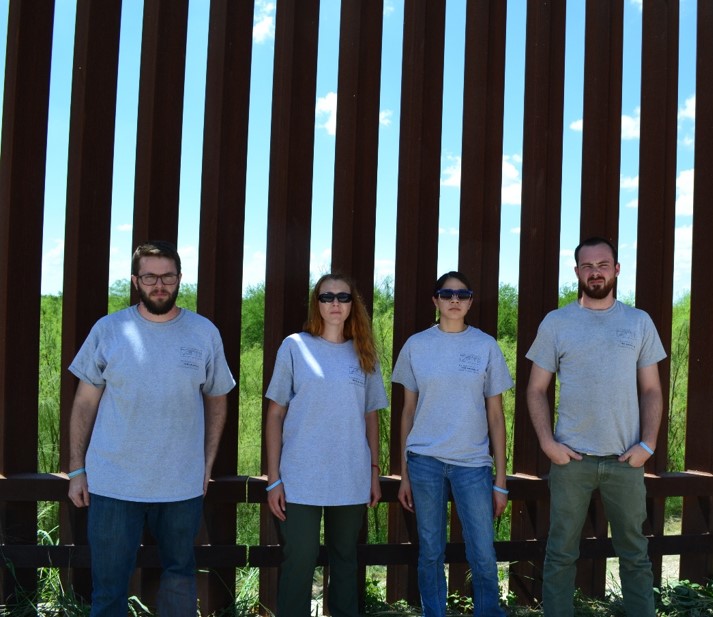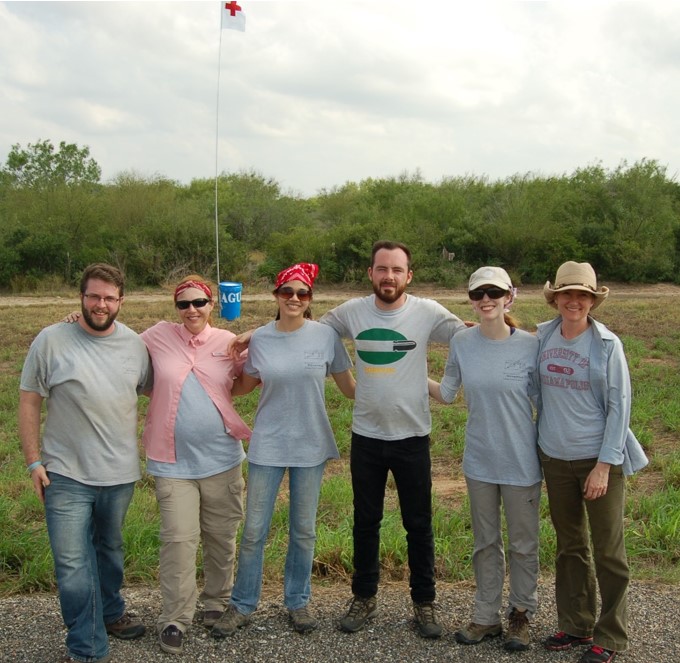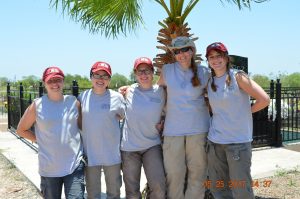The UIndy team made it home around midnight last night. The south Texas winter days are definitely different than winters in Indianapolis. We were greeted by a thick layer of ice on our vehicles and snow on the roads. Just because we are home doesn’t mean we are done sharing with you. Please continue to check the blog daily for the next week.
All posts by lathamke
Peace on Earth and Goodwill to All
“Peace on Earth and Goodwill to All” is a phrase we hear and see a lot this time of the year. It’s displayed in lights, sung in songs and printed on Christmas cards. But what does that phrase truly mean or in today’s society does it mean anything at all? And who, if anyone truly works towards those lofty goals of world peace and extending goodwill to all?
Rebellious Humanitarianism –As we prepare to leave for the border I am confronted with the stark contrast of the love and joy that come with Christmastime and the thundering call for exclusion of all “others”. On the one hand I was raised to treat others the way I want to be treated, yet extending dignity and basic human rights to the “others” is considered a form of rebellion. At what point did humanitarianism become an act of disobedience? If humanitarianism is the promotion of human welfare, than using the term rebellious humanitarianism suggests that not all deserve health, happiness or freedom in every situation.

Radical Hospitality — I recently read a letter from the Colibri Center for human Rights that talked about giving radical hospitality. About going beyond all expectations to do what is right and not necessarily what is easy. Hospitality refers to the warm reception of guests, visitors, or strangers. Radical means advocating for change in a political or social context. Putting the word radical in front of hospitality sends a clear message that hospitality in certain contexts is not extended to all. That not all are welcome here.

Political Caregiving — In the Forward to the book “Sociopolitics of Migrant Death and Repatriation: Perspectives from Forensic Science“, Dr. Robin Reineke speaks about caring for certain groups of people in a way that makes caregiving political. That advocating for marginalized groups by providing dignity in life and in death is an act of social justice, and can bring to light accountabilities that are being hidden from the masses. To care for someone is to protect them. However, in certain contexts providing care goes against the state and suggests that not all should be cared for.

So – all are not welcome, not all are deemed worthy of health, happiness and freedom, and not all deserve care and protection – unless you are practicing rebellious, radical or politicized acts of kindness. Tomorrow the Beyond Borders Team will embark to the Texas Borderlands to volunteer our time in working towards Peace on Earth and Goodwill to All.
We hope 2018 brings you and your loved ones health, happiness and feelings of safety and freedom.
~KEL
Five Years of Humanitarian Science in the TX Borderlands

As our departure date of January 2nd quickly approaches, I can’t help but think about our work in south Texas over the last five years. Since 2013 I have volunteered with colleagues at Texas State University and Baylor University, among others, to aid in migrant identification efforts along the US-Mexico Border. Tens of thousands of migrants have lost their lives crossing the border in the past decade. Changing border policies have funneled crossers from their traditional migration routes into more clandestine and dangerous routes. Since the number of deaths in Texas has only recently reached mass disaster proportions, resources for migrant identification and repatriation are sparse. Many counties chose to bury the unidentified migrants discovered in their jurisdictions due to lack of funding to conduct the costly forensic investigations into their identity. In 2013, a group of volunteer forensic scientists began exhuming the unidentified migrants, so these individuals can begin their journey towards identification and repatriation home. With no governmental resources available, I made the trip with several UIndy students as volunteers to provide a needed forensic service to a marginalized group of individuals. In January I will make my 7th trip to South Texas with a UIndy team to volunteer our time and expertise to this humanitarian crisis. We will be working with Texas State University to locate and exhume the remains of undocumented migrants who died after crossing the border and were buried without identification in pauper graves.
The US/Mexico border wall is 40 times more deadly than the entire history of the Berlin Wall. More people have died in the desert in the southern US than Hurricane Katrina and 9/11 combined. Those that migrate know their odds are slim. But slim odds are better than the institutionalized violence and extreme poverty they face at home. This is a silent mass disaster that many Americans are not aware of. I volunteer not only to provide a specialized forensic science to a community that needs it, but also to immerse my students in a situation that will provide them a more valuable learning experience than any book. Here they can practice the scientific skills they have learned at UIndy in a real world context, in addition to learning social responsibility and an appreciation of common humanity. Year after year I have seen my students grow as they experience a harsh reality very different from their own privileged lives. I use this work to teach my students, children and family about being thankful, humble and kind. In a time when many question the entitlement of the next generation, I see many young people (from our university and others) leaning humility, compassion and understanding in a way that would not be possible without immersion in this humanitarian crisis.
~KEL







